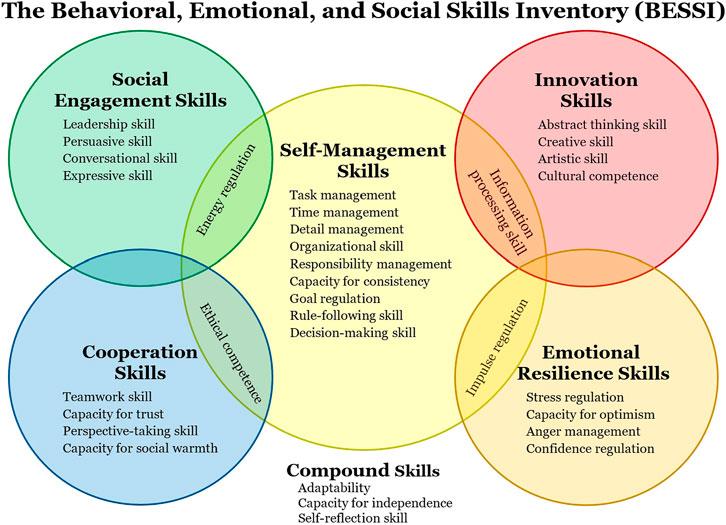The Essential Role of Parental Involvement in Social-Emotional Learning: Boosting Student Success
In today’s rapidly evolving educational landscape, the cultivation of social-emotional skills is considered just as crucial as academic achievement. social-emotional learning (SEL) equips children with the emotional intelligence, empathy, and resilience they need to succeed in school and beyond. However, parental involvement in social-emotional learning is often the key differentiator in fostering these competencies effectively. This article explores how families can actively boost student success through SEL, shares practical strategies, examines real-world case studies, and provides actionable tips for every parent keen on supporting their child’s holistic growth.
What is Social-Emotional Learning (SEL)?
Social-emotional learning is the process through which children and adults develop crucial skills for managing emotions, setting goals, establishing relationships, making responsible decisions, and showing empathy for others. Core components of SEL include:
- Self-awareness
- Self-management
- Social awareness
- Relationship skills
- Responsible decision-making
These skills have profound effects not only on students’ academic outcomes but also on their long-term well-being and future career success.
Why Parental Involvement in Social-emotional Learning Matters
Schools play a important role in implementing social-emotional learning frameworks, but the impact is greatest when parents are actively involved. Here’s why parental involvement in SEL is so essential:
- Reinforcement at Home: SEL concepts learned at school take deeper root when discussed and practiced at home.
- Modeling Emotional Regulation: Children observe and mimic their parents’ reactions to stress, conflict, and change, making parental behavior a powerful teaching tool.
- Consistent Support: ongoing family engagement ensures consistent development of empathy, resilience, and coping skills.
- Customized Growth: Parents can tailor SEL strategies to fit their child’s unique personality and needs.
Benefits of Parental Involvement in Social-Emotional Learning
When parents engage with their children’s social-emotional development, research shows clear benefits both academically and personally.Here are some of the compelling advantages:
- Higher Academic Achievement
- Improved Behavior
- Greater emotional Resilience
- Decreased Anxiety and Depression
- better peer Relationships
- Stronger Parent-Child Bonds
According to a study from CASEL, students participating in social-emotional learning programs showed an 11% gain in academic achievement and reported increased well-being, highlighting the powerful ripple effect of family engagement in SEL.
how Parental Involvement Boosts Student Success
Parental involvement in social-emotional learning acts as a multiplier for student success, both inside and outside the classroom. Here are the primary ways parents can influence SEL outcomes:
- Providing a Safe Emotional Surroundings: Children feel secure to express themselves and seek guidance.
- Encouraging Empathy and Respect: Daily family interactions instill values of kindness and understanding.
- Supporting Stress Management: Parents teach and practice coping strategies together with their children.
When students have a strong social-emotional foundation,they demonstrate better focus,collaboration skills,and confidence—all of which translate into improved school performance and lifelong success.
Practical Tips for Parents to Support Social-Emotional Learning
Getting involved in your child’s social-emotional development doesn’t require expertise—just commitment and consistency. Here are some easy-to-implement strategies:
1. Open Dialog channels
- Ask about emotions: Regularly ask your child how they’re feeling and discuss both positive and challenging emotions.
- Active listening: Practice listening without judgment and acknowledge their feelings.
2. Model Positive Behavior
- Show empathy and respect: React calmly in stressful moments and demonstrate how to manage conflict constructively.
- Reflect on your emotions: Share your feelings and explain how you handle them.
3. Encourage Problem-Solving
- Involve children in decision-making and discuss consequences of different actions.
- Teach steps for resolving conflicts peacefully at home and school.
4. Recognize Effort Over Outcome
- Celebrate your child’s efforts to persist, cooperate, or show kindness, instead of only focusing on results.
- Help them appreciate the learning process, including setbacks.
5.Collaborate With Educators
- Maintain regular communication with teachers about your child’s social-emotional progress.
- Participate in school SEL events or workshops for parents.
Case Studies: Parental Involvement in SEL in Practice
Real-world examples demonstrate how parental engagement can transform social-emotional learning and student experiences.
Case Study 1: The Power of family Reflection
A suburban elementary school implemented a “Family Reflection Night,” were parents and students were encouraged to discuss a weekly SEL topic, such as gratitude or managing disappointment. Teachers reported increased student participation in class discussions and higher empathy levels among peers, directly linked to the family reflective practice.
Case Study 2: Leveraging Technology for SEL
One urban school district launched an SEL app for parents, providing daily conversation starters, video modeling, and simple activities. Engagement metrics soared, and there was a documented decrease in student disciplinary issues after launch. Parents reported a greater sense of confidence in supporting their children’s emotional needs.
First-Hand Experience: A Parent’s Perspective
“Before intentionally practicing social-emotional skills at home, my son would often get frustrated and lash out during homework time. by learning to pause, name our emotions, and use deep breathing together, we both felt less anxious. His grades improved, and so did our relationship.”
— Ana Martinez, Parent of a Middle Schooler
Overcoming Common Barriers to Parental Involvement in SEL
Despite the many benefits, some families may face challenges in engaging with SEL initiatives. Here’s how schools and communities can help:
- Accessibility: Provide materials and resources in multiple languages and formats.
- Versatility: Offer involvement opportunities outside of regular work hours.
- Education: Host workshops or informational sessions to demystify SEL and empower parents.
- Support networks: Create parent support groups for sharing challenges and successes.
Conclusion: Fostering a Generation of Emotionally Bright Leaders
The essential role of parental involvement in social-emotional learning cannot be overstated. By embracing SEL at home, parents become partners with educators in cultivating the next generation of emotionally intelligent, resilient, and successful students. From fostering open conversations to modeling healthy coping strategies, every interaction counts. As more families and schools join forces, we pave the way for children’s thriving not just today, but for a lifetime.
start today—engage with your child’s social-emotional learning journey, and witness the profound benefits unfold in every aspect of their development.

